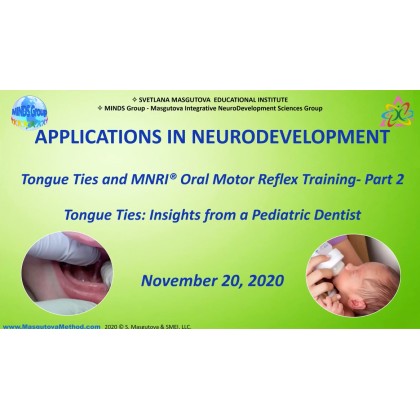
Courses, Conferences & Tools
Applications in Neurodevelopment: Tongue Ties: Insights from a Pediatric Dentist. MNRI® Oral Motor Reflex Training Part 2
Applications in Neurodevelopment: Tongue Ties: Insights from a Pediatric Dentist. MNRI® Oral Motor Reflex Training Part 2
Incidence rates of tongue tie, or ankyloglossia, vary from 2% to 10% in babies, with a male predominance of about 3:1. Doctors may not always notice the short lingual frenulum that limits tongue mobility, and it is not always immediately evident. Tongue tie can lead to challenges such as lack or disruption of breastfeeding, eating, speech development, and other growth and developmental medical problems.
Pediatric dentists play a key role in the diagnosis, evaluation, and treatment of certain related medical issues, as described by Dr. Lawrence Kotlow.
Restrictions of oral motor movements present specific challenges, causing ineffective development of sensory-motor neural circuits for learning and advancement of oral motor skills. Lingual ties are interrelated with reflex development, and thus affect eating and speech development. MNRI® Oral Motor Reflex Training aims to provide optimal sensory input to initiate oral motor learning, which can be effective for addressing challenges with tongue tie.
This lecture continues the topic of Tongue Development and its role in the Oral-Motor System and Practical Application of MNRI® Techniques on Oral-Motor Development
and Tongue Ties and MNRI® Oral Motor Reflex Training Part 1.
Lecturers:
Dr. Lawrence A. Kotlow, DDS, PC
Yichien Su, MS-CCC, SLP and MNRI® Core Specialist
Video Runtime: 2 hours, 39 minutes, 7 seconds.




